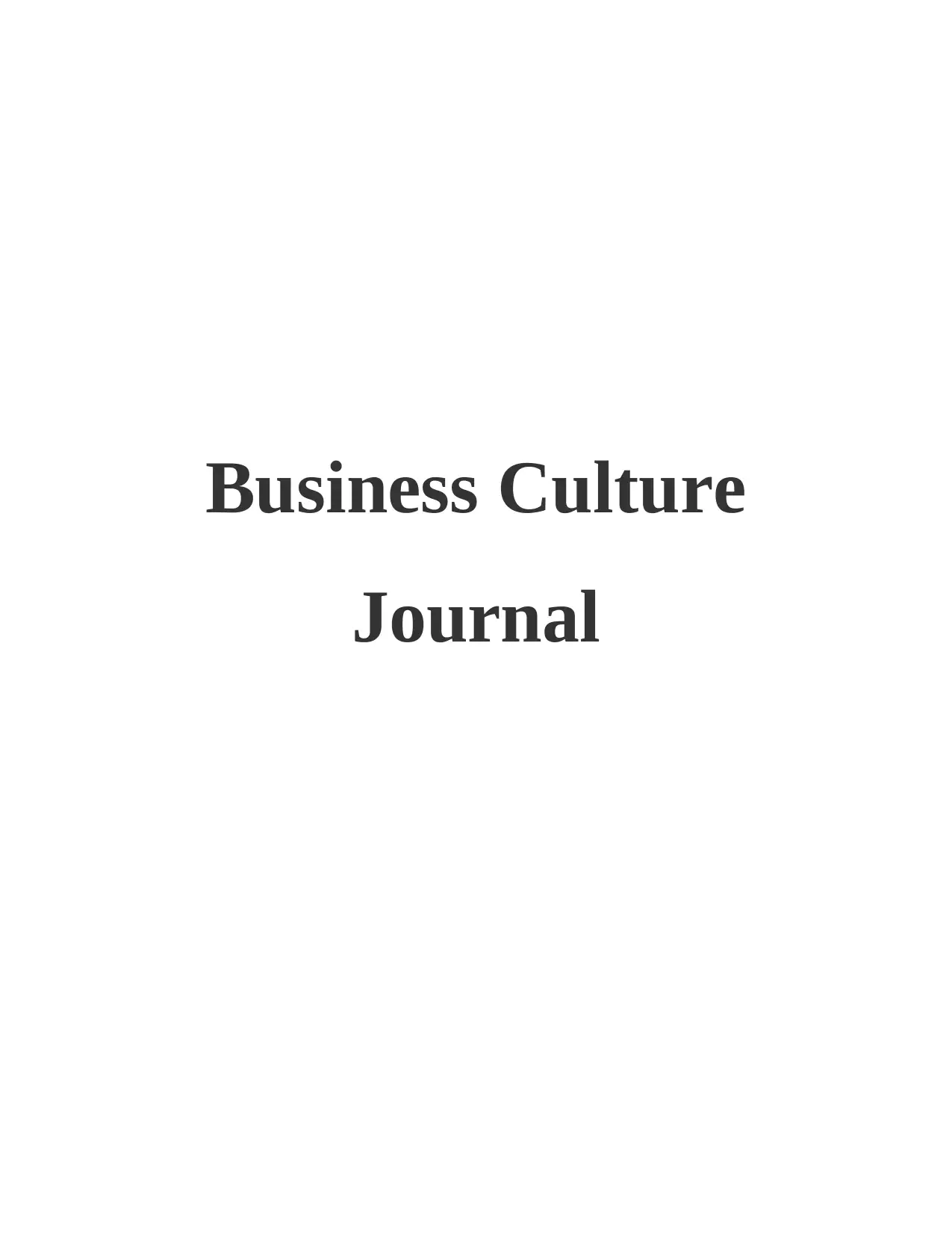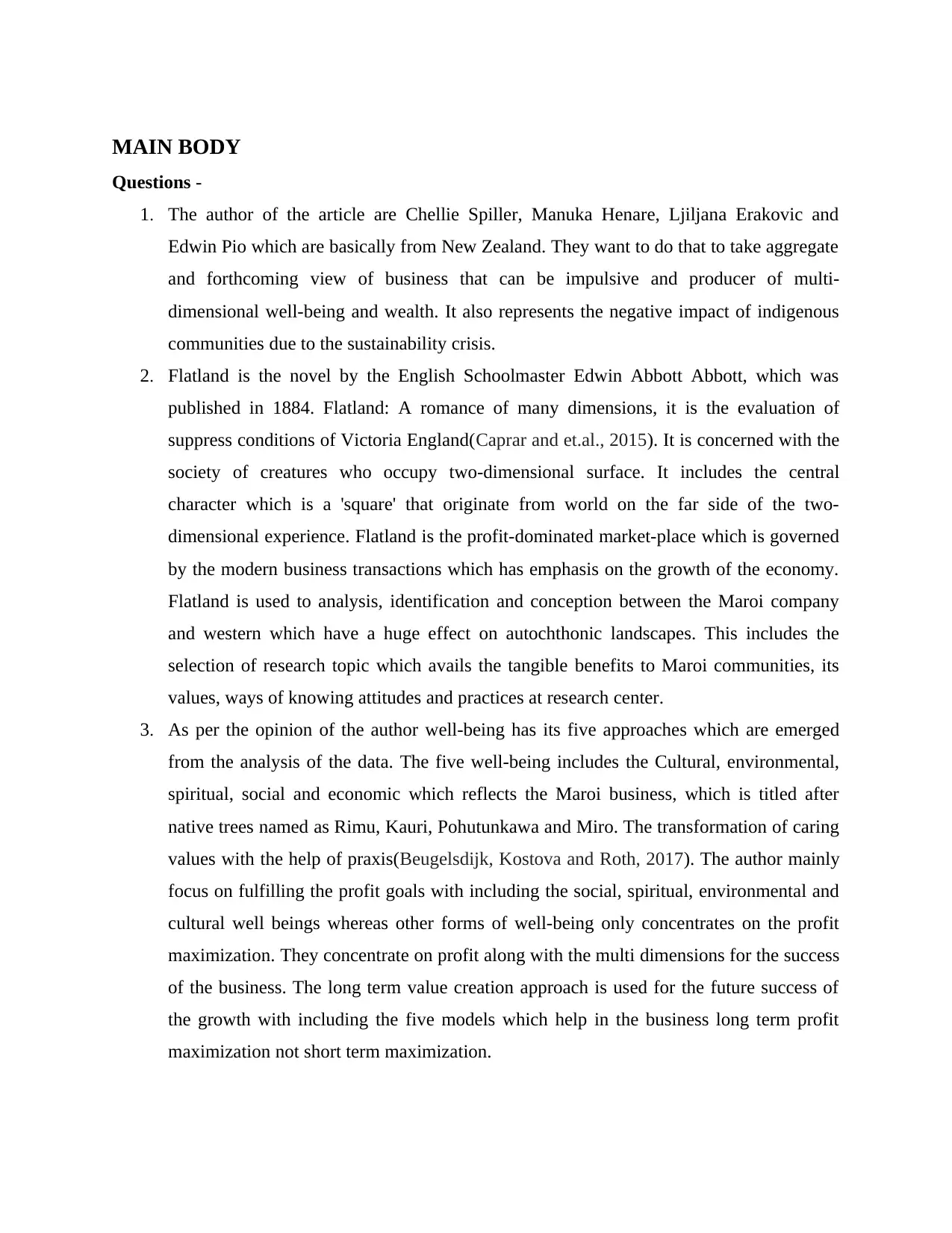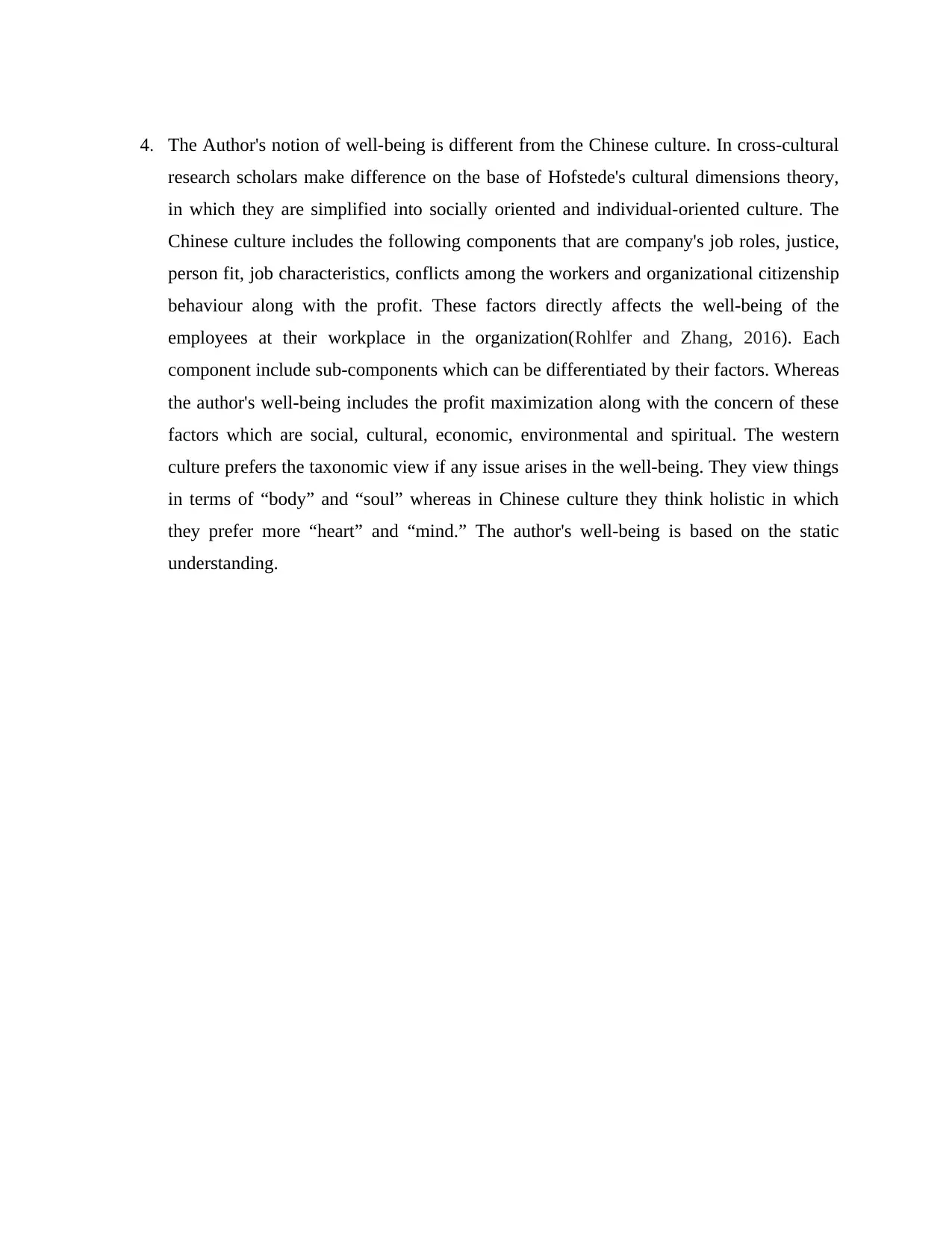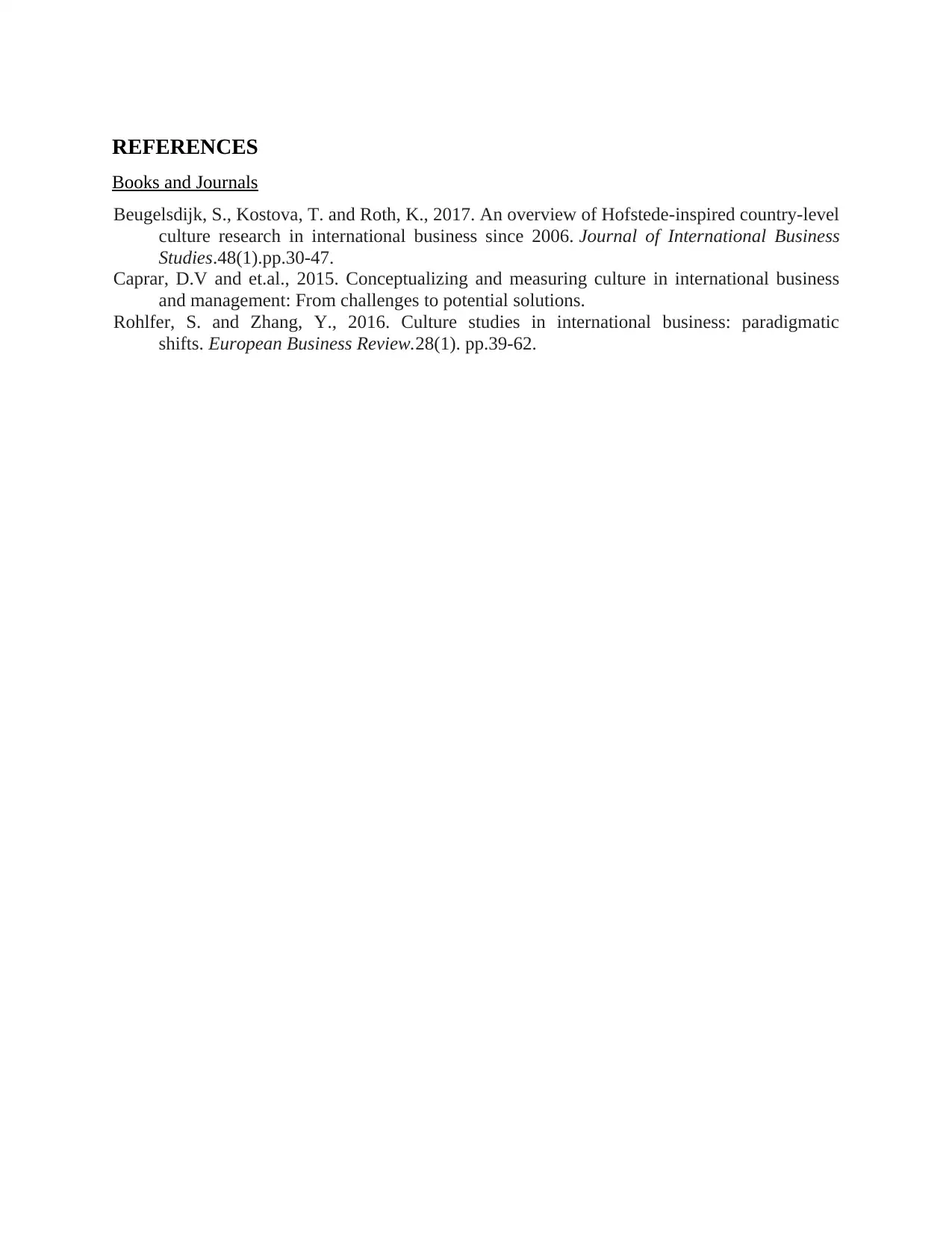Business Culture Journal: Well-being, Culture, and Business Analysis
VerifiedAdded on 2021/02/21
|5
|690
|208
Journal and Reflective Writing
AI Summary
This journal entry delves into the concept of business culture and its impact on well-being, drawing insights from New Zealand and comparing Maori business practices with Western and Chinese cultural perspectives. It analyzes the importance of incorporating cultural, environmental, spiritual, social, and economic well-being into business models, advocating for long-term value creation over short-term profit maximization. The author highlights the significance of understanding different cultural dimensions, such as those outlined by Hofstede, to address well-being in the workplace. The journal entry contrasts the Western taxonomic view of well-being with the more holistic approach of Chinese culture, emphasizing the interplay of company job roles, justice, and employee well-being. The author uses the novel Flatland to understand the impact of modern business transactions and profit-dominated market-place. References include studies by Beugelsdijk, Kostova, Roth, Caprar, Rohlfer, and Zhang.
1 out of 5












![[object Object]](/_next/static/media/star-bottom.7253800d.svg)